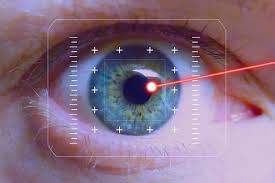Dealing with cloudy vision from cataracts can be a frustrating experience that affects your daily life. It can make activities like reading, driving, or even recognizing faces more difficult. You might find yourself searching for solutions to regain the clarity you once had. One modern option is laser cataract surgery, a procedure that offers a different approach to traditional methods for removing cataracts and restoring sight. Understanding how this type of surgery works and what the recovery process entails may help you make an informed decision.
What Causes Cataracts to Form?
Cataracts develop when proteins in the eye’s lens break down and clump together, creating a cloudy area that blocks or scatters light, leading to blurry or dim vision. Several factors contribute to cataract formation:
- Aging: The most common cause. As we age, lens proteins naturally change, making them prone to clumping.
- UV Light Exposure: Long-term exposure to the sun’s ultraviolet rays can accelerate cataract development.
- Medical Conditions: Certain health issues, like diabetes, can increase the risk of cataracts.
- Family History: A genetic predisposition can make you more susceptible to cataracts.
This gradual clouding often goes unnoticed in its early stages.
How Does Laser Cataract Surgery Work?
Laser cataract surgery uses advanced technology to perform some of the steps traditionally done by hand. The procedure begins with a detailed 3D mapping of your eye. This map provides the surgeon with precise measurements of the lens, including its size, depth, and the location of the cataract. This detailed imaging helps guide the laser with a high degree of accuracy.
Using the 3D map, a computer-guided laser creates a small opening in the front part of the lens capsule. The laser then softens and breaks up the cataract into smaller, more manageable pieces. Once the cataract is fragmented, the surgeon removes the pieces from the eye. After the natural lens material is removed, an artificial intraocular lens (IOL) is inserted in its place to restore clear vision. The precision of the laser allows for very specific and controlled actions during the procedure.
How Does Recovery Compare?
The recovery period after any cataract procedure is a time for your eye to heal. Following laser cataract surgery, you will receive specific instructions from your doctor to help support the healing process. These instructions often include the use of medicated eye drops to prevent infection and reduce inflammation. You may also be advised to wear a protective shield over your eye, especially while sleeping, to avoid accidentally rubbing it.
Many people notice an improvement in their vision within a few days, though complete healing can take several weeks. During this time, it is common to have follow-up appointments to monitor your progress. Your doctor will let you know when it is safe to return to normal activities like driving, reading, and exercising. Adhering to the post-operative care plan provided by your specialist is part of the recovery journey.
Consult a Specialist
Understanding your options for cataract treatment is a positive step toward clearer vision. An eye care professional can offer personalized information based on your specific needs and the health of your eyes. They can perform a thorough examination to determine the extent of your cataracts and discuss whether you are a suitable candidate for laser cataract surgery. To learn more and get tailored advice, schedule a consultation with a qualified specialist.














